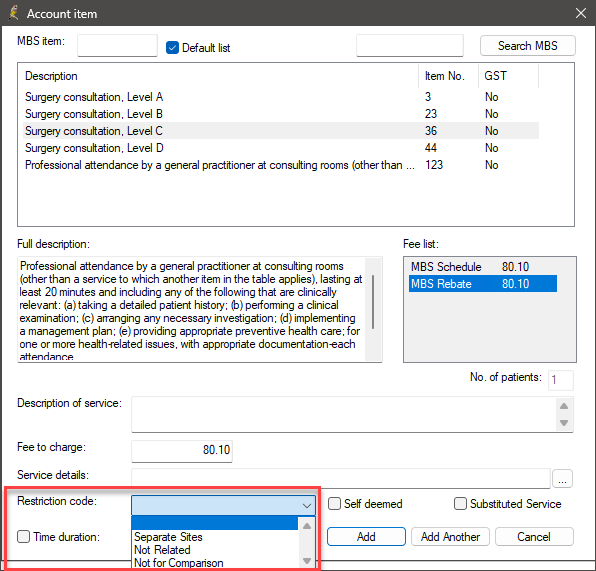This article describes the Medicare restrictive override codes that healthcare providers can use to submit extra information on claims for specific situations using a two-character indicator to ensure accurate assessment and payment for services.
What are the restriction override codes?
Healthcare providers may be required to supplement a claim with additional information for Medicare to evaluate claims accurately. The restriction override code employs a two-character indicator that allows healthcare providers to provide data for specific circumstances to ensure that the service is assessed and payment is accurate. For example, the Separate Sites restriction override code can indicate that separate independent services, such as excisions, were performed at different body areas.
The Restriction Code on the Account Item window supplies additional information that will prevent a claim containing multiple similar items from being rejected.

|
Code |
Restriction Code to select |
Use when... |
|---|---|---|
|
SP |
Separate Sites |
A service was performed at the same attendance (or same day) to different sites on the patient's body. |
|
NC |
Not for comparison |
There was a separate clinical requirement for each item, and the service was not performed for reasons of comparison. Usually only applies to diagnostic and imaging services. |
|
NR |
Not related |
A service was performed that is not associated with the patient's current care plan or cycle of care. For example, an unrelated service was performed at the same attendance as a care plan review. |
Visit the Services Australia website for more information on restriction override codes.
Related topics
Last updated: 22 December 2023.